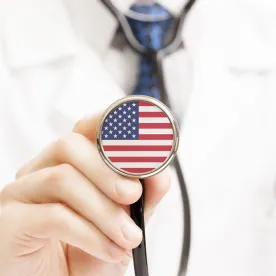Since the Families First Coronavirus Response Act (FFCRA) became law last week (amazing how long ago that feels, right?), the US Department of Labor (DOL) has been publishing and updating guidance concerning the public health emergency paid sick leave and emergency Family and Medical Leave Act (FMLA) leave required under the law. (See our prior posts here and here). As of March 29, another 21 questions-and-answers have been added to the DOL’s Q&A webpage. The newly-added questions and answers appear at Questions 38 through 59.
The most recent guidance addresses some of the most significant questions arising under the new law, including as follows.
- The guidance addresses the exemption from the FFCRA’s paid leave requirements for employers with fewer than 50 employees. Under the guidance, these employers are exempt from the requirement to provide paid sick leave or expanded FMLA leave, in both cases, due to school or place of care closures or child care provider unavailability for COVID-19 related reasons when doing so would jeopardize the viability of the small business as a going concern. The DOL’s Q&A explains that a small business may claim this exemption if an “authorized officer” of the business has determined that:
-
- the provision of paid sick leave or expanded family and medical leave would result in the small business’s expenses and financial obligations exceeding available business revenues and cause the small business to cease operating at a minimal capacity;
-
- the absence of the employee or employees requesting paid sick leave or expanded family and medical leave would entail a substantial risk to the financial health or operational capabilities of the small business because of their specialized skills, knowledge of the business, or responsibilities; or
-
- there are not sufficient workers who are able, willing, and qualified, and who will be available at the time and place needed, to perform the labor or services provided by the employee or employees requesting paid sick leave or expanded family and medical leave, and these labor or services are needed for the small business to operate at a minimal capacity.
- The guidance explains that the 12 weeks of emergency FMLA leave available under the FFCRA is not in addition to the standard entitlement under the FMLA for up to 12 weeks of unpaid leave for non-COVID-19 reasons. Accordingly, any unpaid FMLA leave used by an employee during the previous 12 months for non-COVID-19 reasons reduces the period of time the employee is eligible to receive paid FMLA leave under the FFCRA.
- The guidance additionally clarifies that employers are required “to provide the same (or a nearly equivalent) job to an employee who returns to work following leave” under the FFCRA, whether paid sick leave or paid FMLA leave. The DOL explains that its position that employers must grant job restoration to employees who take FFCRA leave is based on “Congressional direction to interpret requirements among the Acts consistently.” The guidance does note, however, that job restoration rights under the FFRCA do not protect employees from employment actions, such as layoffs, that would have affected employees regardless of whether they took leave, meaning that employers can still lay off employees for legitimate business reasons, including due to closure of the worksite.
- The guidance interprets the term “health care provider” in the FFCRA expansively. Under the FFCRA, employees who are “health care providers” may be exempted from the paid leave requirements of the law. The guidance defines “health care provider” to mean:
-
- anyone employed at any doctor’s office, hospital, health care center, clinic, post-secondary educational institution offering health care instruction, medical school, local health department or agency, nursing facility, retirement facility, nursing home, home health care provider, any facility that performs laboratory or medical testing, pharmacy, or any similar institution, employer, or entity. This includes any permanent or temporary institution, facility, location, or site where medical services are provided that are similar to such institutions; and
-
- any individual employed by an entity that contracts with any of the above institutions, employers, or entities institutions to provide services or to maintain the operation of the facility. This also includes anyone employed by any entity that provides medical services, produces medical products, or is otherwise involved in the making of COVID-19 related medical equipment, tests, drugs, vaccines, diagnostic vehicles, or treatments. This also includes any individual that the highest official of a state or territory, including the District of Columbia, determines is a health care provider necessary for that state’s or territory’s or the District of Columbia’s response to COVID-19.




 />i
/>i
